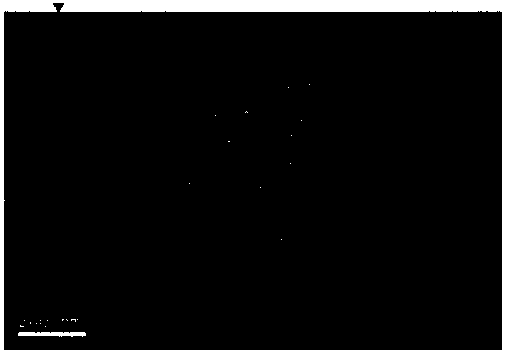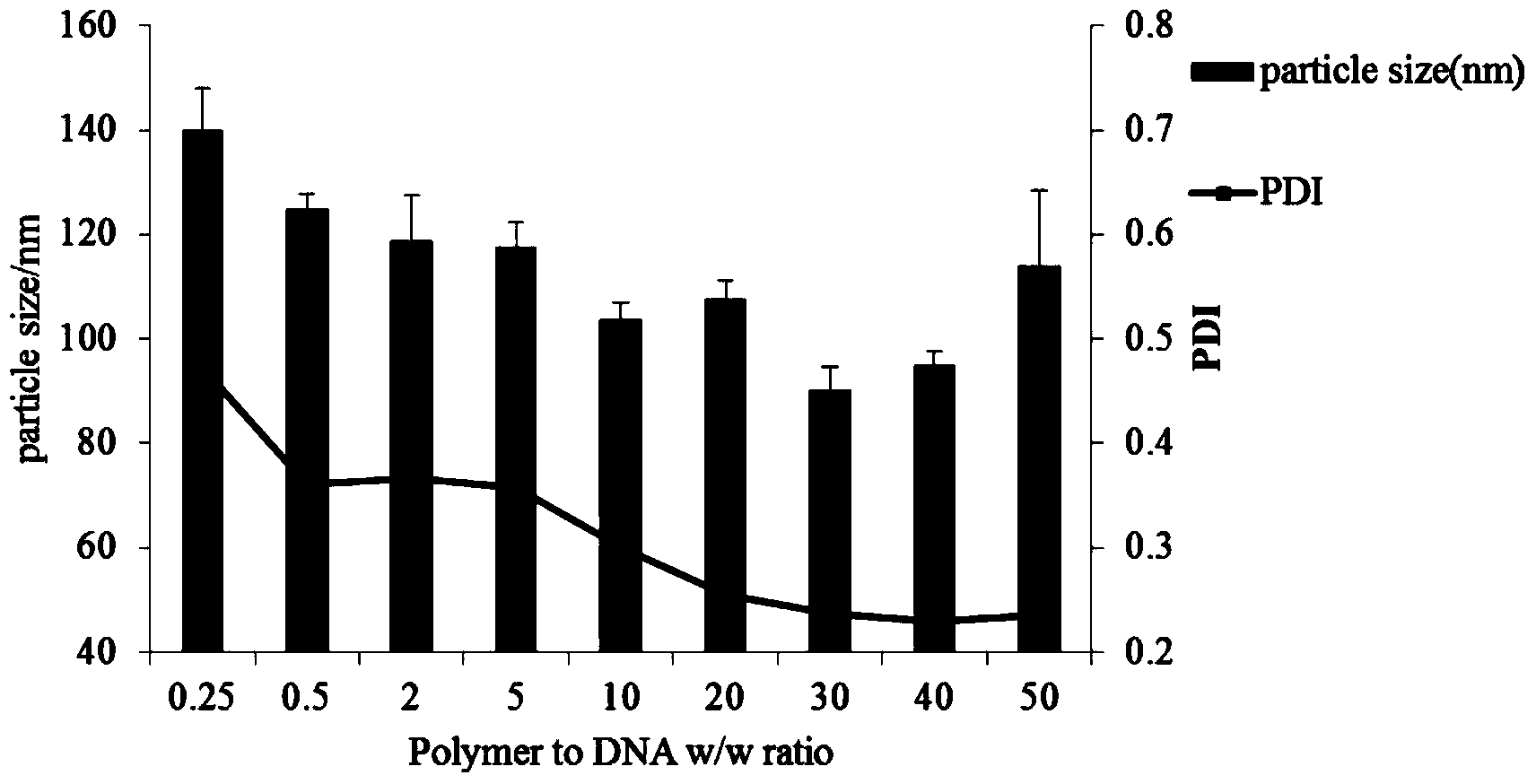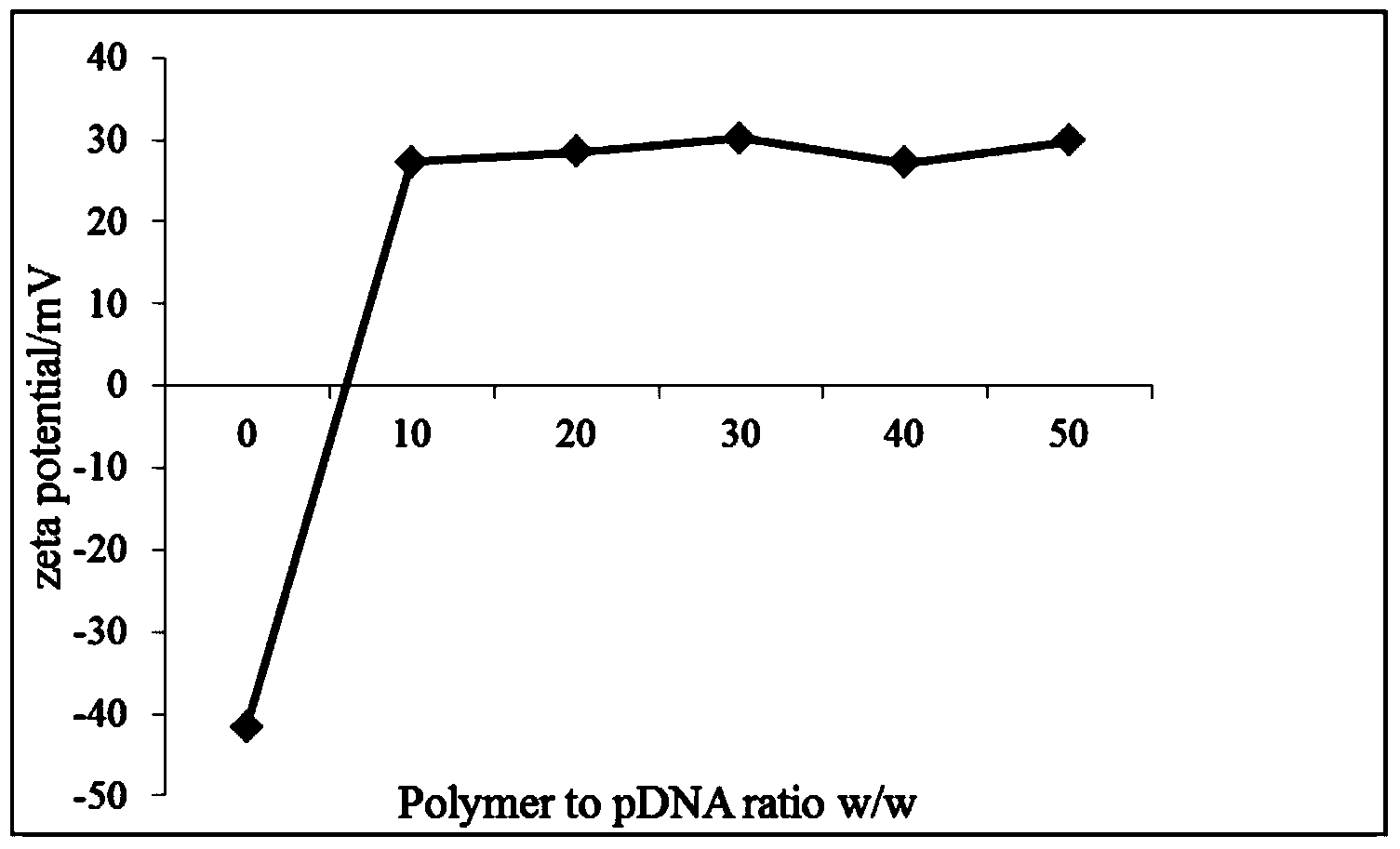Poly spermine polymer-contained nano-particle, and preparation method and application thereof
A nanoparticle and polymer technology, applied in the direction of drug combination, pharmaceutical formula, genetic material components, etc., to avoid adhesion, inhibit angiogenesis, and achieve targeted effects
- Summary
- Abstract
- Description
- Claims
- Application Information
AI Technical Summary
Problems solved by technology
Method used
Image
Examples
Embodiment 1
[0044] Example 1 Preparation of Polyspermine Polymer (PSA)
[0045] The whole reaction is carried out in an anhydrous and oxygen-free environment (protected by high-purity nitrogen). Spermine and 2,5-imidazole dicarbaldehyde are reacted at a molar ratio of 1:2.5. The reaction solvent is anhydrous ethanol (in anhydrous Add anhydrous magnesium sulfate to ethanol and let it stand for 48 hours, and then distill to obtain fresh anhydrous ethanol for later use). Dissolve spermine (1 mol) and 2,5-imidazole dicarbaldehyde (2.5 mol) with absolute ethanol, respectively, and make 20mL and 50mL solutions. The reaction was carried out with stirring at room temperature, and the o-phthalaldehyde solution was added dropwise to the spermine solution with a constant pressure dropping funnel. The reaction was stopped after 24 hours, and most of the solvent was removed by a vacuum rotary evaporator under reduced pressure and low temperature. Then the product was dissolved in a small amount of ultra...
Embodiment 2
[0047] Example 2 Preparation of Polyspermine Polymer (PSA) Coated Plasmid DNA Nanoparticles
[0048] The polyspermine polymer prepared in Example 1 was formulated into an aqueous solution with a concentration of 2μg / μl and diluted with sterile water to 20ng / μl, 40ng / μl, 100ng / μl, 200ng / μl, 1000ng / μl and 2000ng / μl solution. In addition, the plasmid DNA containing 5'-GGAGUACCCUGAUGAGAUC-3' was made into an aqueous solution with a concentration of 20ng / μl. Add an equal volume of the polyspermine polymer aqueous solution to the plasmid DNA aqueous solution, vortex for 5 minutes, and let stand for 20 minutes to obtain a series of nanoparticle solutions.
Embodiment 3
[0049] Example 3 Characterization of the particle size and potential of nanoparticles
[0050] Put the series of particle solutions prepared in Example 2 into the test tank of the BIC90plus particle size potential analyzer. The mass ratios of PSA to plasmid DNA in the particles of the series of particle solutions are 1, 2, 5, 10, 50, 100, and set The test temperature is 25°C, the medium is water, the viscosity is 0.89 cp, the refractive index is 1.330, and the light scattering angle is 90. , The detection wavelength is 659nm, each sample is tested 3 times, each run time is 2min, and the average particle size is recorded. The result is figure 1 As shown, the results show that the particle size of the nanoparticles is below 200 nm.
[0051] Put the series of particle solutions prepared in Example 2 into the test tank of the BIC90plus particle size potential analyzer. The mass ratios of PSA to plasmid DNA in the particles of the series of particle solutions are 1, 2, 5, 10, 50, 100, ...
PUM
| Property | Measurement | Unit |
|---|---|---|
| Viscosity | aaaaa | aaaaa |
| Particle size | aaaaa | aaaaa |
| Molecular weight | aaaaa | aaaaa |
Abstract
Description
Claims
Application Information
 Login to View More
Login to View More - R&D
- Intellectual Property
- Life Sciences
- Materials
- Tech Scout
- Unparalleled Data Quality
- Higher Quality Content
- 60% Fewer Hallucinations
Browse by: Latest US Patents, China's latest patents, Technical Efficacy Thesaurus, Application Domain, Technology Topic, Popular Technical Reports.
© 2025 PatSnap. All rights reserved.Legal|Privacy policy|Modern Slavery Act Transparency Statement|Sitemap|About US| Contact US: help@patsnap.com



